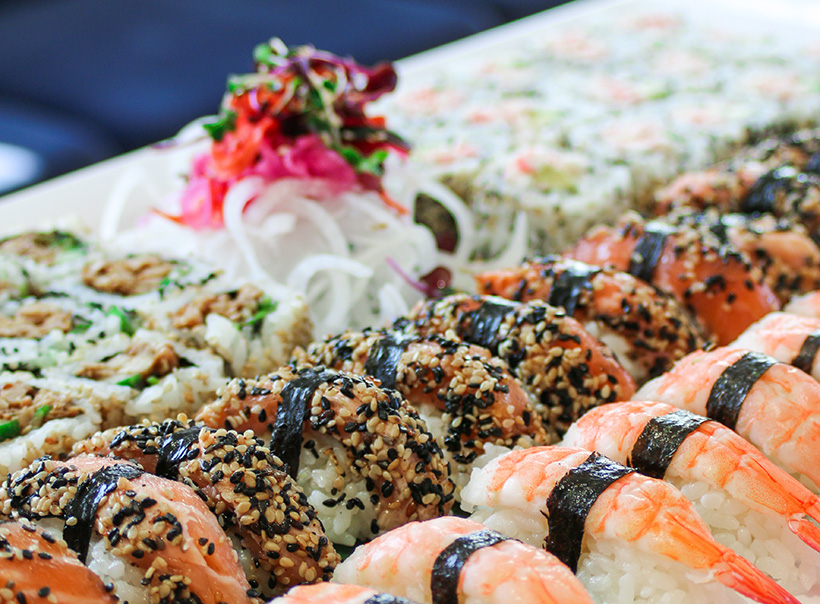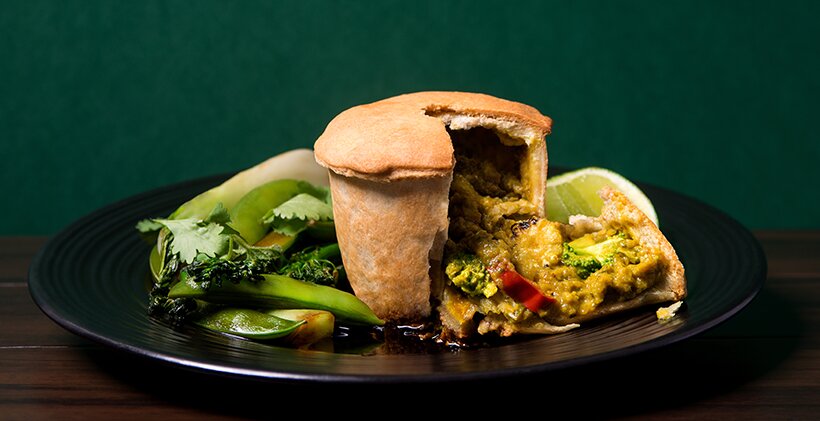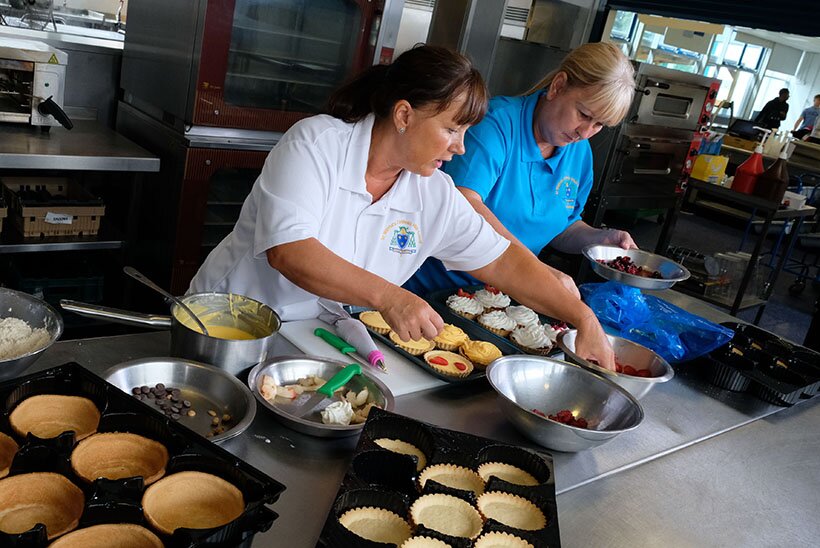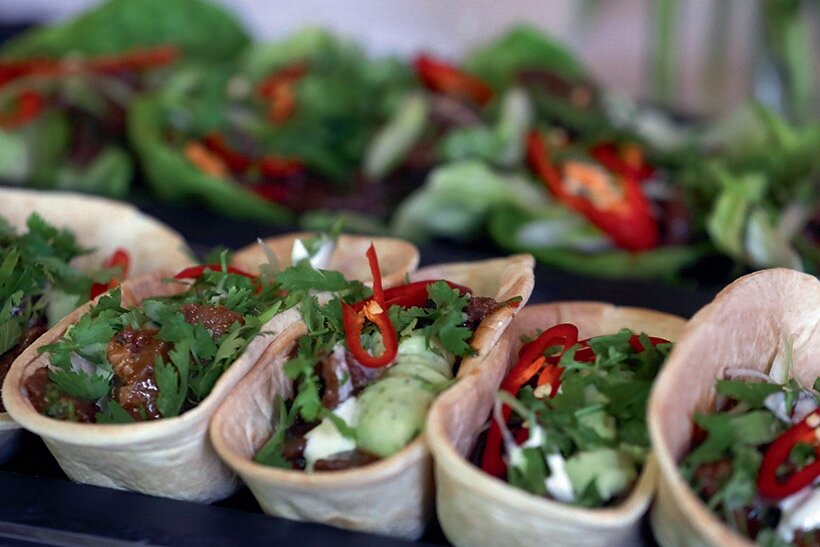Rule the school: global flavours score top marks in school food
Creating excitement and harnessing global food trends are vital for caterers in the education sector. Richard McComb reports
From boiled beef and carrots to turkey twizzlers and then insect bolognese, school dinners and food in the wider education sector continue to undergo rapid changes.
Entomophagy – that’s the practice of munching insects by humans – is one of the latest ways of tackling the age-old challenge of getting young people to eat their greens, and, in this case, their invertebrates.
Preparing dishes with crickets isn’t a case of hopping on the sustainability bandwagon, with the evidence suggesting ethically minded schoolchildren like the approach. In a study of 200 Welsh primary and secondary pupils, tastings of products made from an insect and plant protein mince met with a positive response. Youngsters sampled Vexo bolognese and burgers, made by Bug Farm Foods. When the Vexo option was temporarily put on the menu, 60% of children eating hot meals picked the insect option.
In a reflection of the eating-out market, there is a bewildering array of trend suggestions for education settings, such as new wave Mexican (burritos and enchiladas), west African (jollof rice and chicken yassa) and Indian street food (roti wraps), all flagged up by Tilda. Then there is the innovative work taking place in higher education kitchens.
Mike Haslin, chief executive of the University Caterers Organisation (TUCO), says: “According to TUCO’s Global Food and Beverage Trends Report, Generation Z spend more on food than clothes, enjoy casual dining, snack more than any generation before them – healthy and plant-based are their go-to options – but mostly they want convenience, on-the-go food options in hand-held formats that are tailored to their individual needs.”
There are “no boundaries” when it comes to global flavours and Japanese food in particular has seen a recent surge in popularity among students. Haslin says: “As a result of these emerging consumer trends, in-house caterers in higher education establishments and universities have been adapting their food offering to meet these new demands. We are seeing a growth in the provision of healthy snacking options, self-serve and ‘build your own’ options as well as international food being made more readily available.”
At King’s College London, the catering team introduced a Taste of King’s Food event to educate new students about the origins of products and their environmental impact, while also helping to introduce unfamiliar foods to international students.

Manish Shah, associate director of King’s Food, said: “We have a huge amount of competition right on our doorstep, so it is important that we come up with an offering that is unique. Sushi has grown in popularity and is a popular option for our students. As a result, we recruited a sushi chef so that all of our sushi can be made from scratch in our kitchens. People can watch it being made which creates theatre and ensures people continue to return on a daily basis.”
Meanwhile, Roots, a 100% plant-based pop-up restaurant, meets the growing demand for meat-free options.
The green stuff
One thing is now clear – vegetarian and vegan options should never be a dull, uninspiring after-thought and colour and texture are important. Jonathan Harvey-Barnes, senior development chef at Essential Cuisine, says: “A wider variety of nutrient-rich superfoods, such as beans, pulses, seeds, brown rice, chilli and garlic, are not only important for well- being – they can, if eaten as part of a healthy diet, also have benefits for productivity and greater concentration, vital ingredients for the learning environment.
“It’s all about capturing kids’ interests and fuelling not just themselves, but their imaginations. A great way to do this is to put vegetarian or vegan dishes at the very front of the run, making it the first thing that hungry kids see when they’re queuing for food.”
New plant-based pie brand Saveg is targeting 16- to 35-year-old flexitarians and vegans, and hopes to win business in the university sector. It is in advanced discussions with several major suppliers and institutions for its chilled and frozen products, which includes quirkily named products like My Thai Pie.

Co-founder Maria Marling said: “There are few options in the food market that are both plant-based and ‘soul comforting’ while delivering bold, fearless flavours. People always feel like they are missing value when buying a plant-based meal due to its lack of flavour and substance.”
Saveg products include Hoisin Jack Pie (pulled jackfruit, edamame beans, carrots, sticky hoisin sauce); My Thai Pie (baby corn, edamame beans, broccoli, Thai green curry sauce); Leeky Shroom Pie (mushroom and leeks cooked in tarragon and red wine); and Goan Then Pie (roasted cauliflower, sweet potato, peas, Goan curry sauce).
Going global
LACA’s members serve more than three million school lunches a day and report a growing demand for vegan, vegetarian and plant-based meals in schools. The organisation has also noticed an increase in secondary schools for on-the-go dishes, such as wraps and street food. Asian flavours, including noodles and sushi, and Nando’s-style piri-piri chicken are popular in both primary and secondary settings.
Creating excitement around the food offer, particularly for young children, is important and Mission Foods points to the popularity of tortilla wraps compared with traditional sandwich options in early education environments.
“Offering alternative options to familiar menu items is crucial in inspiring and encouraging the younger generation to positively engage with the food they are eating,” says Kim Hartley, business development chef at Mission Foods.
“Tortillas and flatbreads boost interaction at meal times and can be used in a diverse range of main dishes and hand-held options. Tortilla-based meals such as healthy fajitas, tacos and quesadillas give food-conscious students the chance to expand their taste buds and tap into the latest street food trends.”
“This can even translate into secondary school dining and higher education outlets, providing authentic, global flavours to encourage older students to keep spend on-site, as well as helping caterers offer exciting and interesting menu plans for students.”
Thomas Ridley Foodservice says caterers should consider simple options such as vegetable wraps, black bean nachos and mini quiches, all of which can accommodate an extra serving of vegetables. “Introducing tofu as a scrambled option or with a black bean sauce can also help to increase protein and the sauce introduces a great taste to a wrap or rice dish,” says Steve Lyons, sales director at Thomas Ridley Foodservice.
“Another firm favourite is nachos and these can include loads of shredded vegetables, avocado and cheese – vegan if needed – which can give students a great, filling lunch. The eternal favourite of a pizza can be made with a gluten-free base from Millennium, Squeaky Bean Frozen Vegan Meatless Meatballs and a vegan cheese from Applewood.”
Tugo’s food concepts have been designed with children in mind and new products for the 4ork brand have been inspired by global foods. The range includes: chicken shawarma (lightly spiced, grilled chicken in a chickpea and spinach sauce); a Moroccan spiced tagine (rich tomato sauce with apricots, coriander and cumin); and a spicy Chinese bang-bang chicken (sweet chilli, spring onions and soy).

Plenty of fish
Seafood appeals to young people adopting flexitarian or pescatarian diets. Direct Seafoods provides online updates to promote sustainably caught species. Director of sustainability Laky Zervudachi says: “Dishes such as fish curries and fish tacos are a great fit with university menus, and enable chefs to use a broader range of species according to availability and the latest advice on sustainability – and offer their customers great value.”
Fish features prominently on menus developed by Essex County Council, which provides catering services to 50,000 students a day. Many pupils do not eat another hot meal outside school and it is crucial they receive nutritionally balanced meals in line with the School Food Plan.
Helen Baverstock, the council’s business development lead, creates a range of eight menus. She says: “We always include three different meat protein sources, a vegetarian option and an omega-3 oily fish solution. With these starting points in mind, we have the basis of a balanced menu.”
The catering team conducts taste tests with pupils to discover the products they prefer. “It is important that we weigh up all the options, including sustainability, price, nutritional benefit and, importantly, pupils’ feedback to ensure we pick the best all-round product,” says Baverstock. “This was the route we employed when recently evaluating our fish finger selection. By asking pupils to rate the fish fingers on their appearance, taste, smell and texture, we were able to get a clear branded winner. This is why we serve Young’s fish fingers throughout the county.
“Seafood is a great form of protein that provides plenty of nutritional value from all-important omega-3 fatty acids. It helps to enhance the students’ cognitive perspective which, in turn, aids their learning.”
St Wilfrid’s Catholic High School and Sixth Form College in Featherstone, West Yorkshire, caters for 1,700 students with nine catering outlets, including a dedicated salad bar, a sandwich station and a hot food counter. The 19-strong team, led by catering manager Babs Askham, tries to cook and bake as much possible to provide fresh, nutritious meals.

“With our ethos for homemade dishes across the menu, we would often be in the kitchen from 6am to make large quantities of pastry ready for that day,” says Askham. “With such a key part of many dishes, we felt that this additional time and effort was the only solution to getting the quality and consistency we were looking for. That was until we were introduced to Pidy.” St Wilfrid’s now uses Pidy’s ready-to-fill cases, both sweet and neutral pastry, for filling tarts with different meats, vegetables, seasonal fruits and homemade custards. “Pidy also does a range of gluten-free pastry, which is a great inclusion on our special dietary requirements offering,” adds Askham.
Gluten-free porridge oats offer pupils a breakfast option with nutritional benefits. A 40g bowl of Glebe Farm Food’s gluten-free porridge oats contain 3.6g of fibre and 5.9g of protein, and is low in saturated fat and salt. Toppings add extra nutrition, flavours and textures, like fresh fruits and seeds. Glebe Farm’s gluten- and dairy-free oat drink, PureOaty, is made using only four ingredients: British gluten-free oats, water, sunflower oil and salt.
Lakeland Dairies has reduced the sugar in its bestselling Viva Flavoured Milk range (strawberry, banana and chocolate) while added Vitamin D helps absorption of calcium for the development of healthy bones. Yazoo claims to be the only flavoured milk brand to offer a no added sugar or artificial sweeteners milk drink, Yazoo No Added Sugar (pictured).
Case study: Cardiff University

Cardiff University is a (large) global village – its 30,000 students include 7,500 from overseas, representing more than 100 countries.
Cardiff decided to conduct a review of its food provision, as commercial director Philip Rees-Jones explains: “We reduced the number of catering outlets from 17 to 10 and spent a couple of million pounds refurbishing six of them. We then reviewed all the menus and offerings. The plan was to create destination venues.”
Rees-Jones, vice-chair of the University Caterers Organisation (TUCO), says Cardiff used TUCO’s research to align products to what students and staff wanted. It made use of the subsidised training and development packages available through TUCO membership, which saw staff go on food study tours to Portugal and India.
“We brought these learnings back to the university and they have proved really helpful in inspiring the direction our food offering has taken,” says Rees-Jones. “Using TUCO research we modernised the outlets, introducing more self-serve and healthy options with international flavours.
“We also wanted to introduce more drama to proceedings so we introduced live cooking. At the noodle bar in the Trevithick restaurant in the city centre, you can build your own dish with a choice of proteins, vegetables, sauce and rice or noodles. This has proved extremely popular with students and staff as they can tailor their dish to their individual palate.
“Overall sales are up in our new venues by about 15%-20%, demonstrating that by making bold decisions, we have not only been able to revamp our foodservice offering, we have also elevated our revenue to new heights.”
Suppliers
Bug Farm Foods
Direct Seafoods
Essential Cuisine
Glebe Farm Foods
Lakeland Dairies
Pidy
Thomas Ridley Foodservice
Tilda
TUCO
Tugo
Young’s Foodservice
















